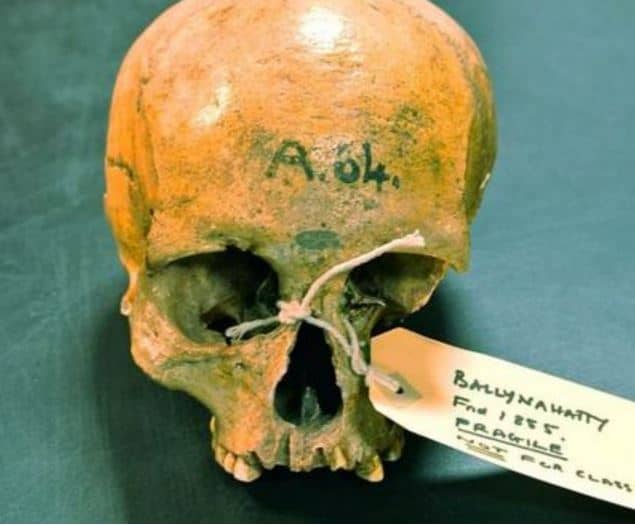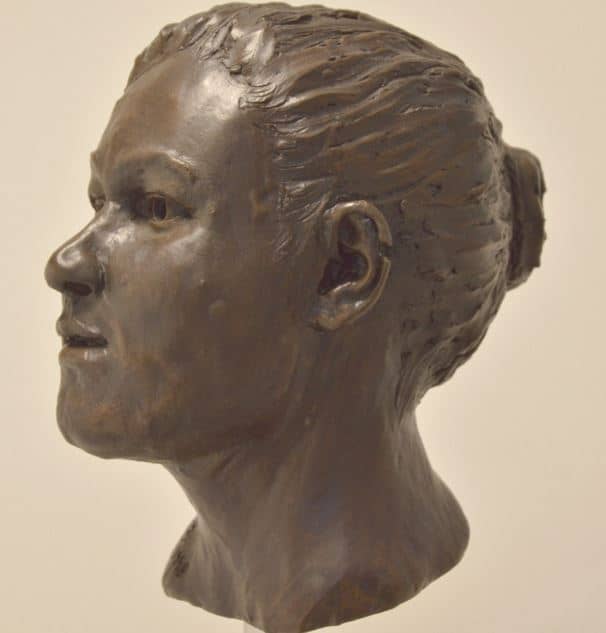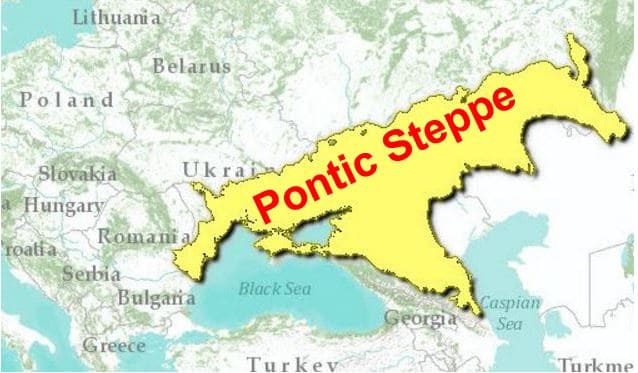The genetic history of the Irish people shows there has been mass migration from many areas, including as far away as Eurasia and the Middle East, say scientists after mapping the DNA of a female farmer dating back 5,200 years and three Irish men from about 4,000 years ago during the Bronze Age, after the introduction of metalworking.
Researchers from Trinity College Dublin and Queen’s University Belfast, who sequenced the first genomes from ancient Irish humans, published their findings and conclusions in the academic journal Proceedings of the National Academy of Sciences.
The study is already answering key questions regarding the origins of Ireland’s people as well as their culture.
 The Ballynahatty woman, excavated near Belfast in 1855, lay in a Neolithic tomb chamber for more than 5,000 years. (Image Credit: Daniel Bradley, Trinity College Dublin)
The Ballynahatty woman, excavated near Belfast in 1855, lay in a Neolithic tomb chamber for more than 5,000 years. (Image Credit: Daniel Bradley, Trinity College Dublin)
Ireland’s genetics are ‘intriguing’, the scientists say. It lies at the edge of several European genetic gradients, with the global maxima for the variants that code for lactose intolerance – the western European Y chromosome type – and a number of major genetic diseases including haemochromatosis, an inherited blood disorder that causes the body to retain excessive amounts of iron.
Genetic time travel
The origins of this heritage, however, are not known. There is only one way to discover our genetic past, and that is to sequence genomes directly from ancient people, by travelling in a type of genetic time machine.
In archaeology, migration has long been a hot topic. Nobody is sure whether the great lifestyle transitions in the British Isles from hunter-gatherer to farming, and later from stone to metal use, were due to a domestic evolution, or whether these changes were the result of influences from immigrants.
The ancient Irish genomes each show clear evidence of massive migration. The scientists found that early farmers have a majority ancestry originating ultimately from the Middle East. Agriculture was invented in the Middle East.
The genomes of the three Bronze Age men are different. They show about one third of their ancestry coming from ancient sources in the Pontic Steppe, an area covering about 383,800 square miles, extending from the northern shores of the Black Sea eastward to northwest Kszakhstan.
 A reconstruction of Ballynahatty Neolithic skull by Elizabeth Black. Her genes tell us she had brown eyes and black hair. (Image credit: Barrie Hartwell)
A reconstruction of Ballynahatty Neolithic skull by Elizabeth Black. Her genes tell us she had brown eyes and black hair. (Image credit: Barrie Hartwell)
Study leader, Professor of Population Genetics in Trinity College Dublin, Dan Bradley, said:
“There was a great wave of genome change that swept into Europe from above the Black Sea into Bronze Age Europe and we now know it washed all the way to the shores of its most westerly island, and this degree of genetic change invites the possibility of other associated changes, perhaps even the introduction of language ancestral to western Celtic tongues.”
Dr. Eileen Murphy, Senior Lecturer in Osteoarchaeology at Queen’s University Belfast, said:
“It is clear that this project has demonstrated what a powerful tool ancient DNA analysis can provide in answering questions which have long perplexed academics regarding the origins of the Irish.”
 The Bronze Age genomes show that about one third of their ancestry came from ancient sources in the Pontic Steppe. (Image: eoearth.org)
The Bronze Age genomes show that about one third of their ancestry came from ancient sources in the Pontic Steppe. (Image: eoearth.org)
A mix of southern European plus genes from elsewhere
While the early farmer had brown eyes and black hair, and looked more like southern Europeans, the genetic variants found in the three Bronze Age men from Rathlin Island had the most common Irish Y chromosome type, blue eye alleles and the major variant for the inherited disease haemochromatosis.
The C282Y mutation, linked to haemochromatosis, is so common among people of Irish descent that it is often referred to as a Celtic disease. This discovery marks the first identification of a major disease variant in prehistory.
Lara Cassidy, a PhD Researcher in Genetics at Trinity, said:
“Genetic affinity is strongest between the Bronze Age genomes and modern Irish, Scottish and Welsh, suggesting establishment of central attributes of the insular Celtic genome some 4,000 years ago.”
Citation: “Neolithic and Bronze Age migration to Ireland and establishment of the insular Atlantic genome,” Lara M. Cassidy, Rui Martiniano, Eileen M. Murphy, Matthew D. Teasdale, James Mallory, Barrie Hartwell, and Daniel G. Bradley. Proceedings of the National Academy of Sciences. December 28, 2015. DOI: 10.1073/pnas.1518445113.
Video – Reading the Past in Ancient Irish Genomes

